Landline
Telephone Tape Recorder Output Socket
Sorry, this is currently
unavailable for sale while I undergo a transition of
retail sales organisation.
Etsy shop top level for other kits and
components: UsefulComponents
Etsy Shop
Officially speaking, any
telephone so modified will no longer have the approval of
your local copper line telecoms provider or a valid CE mark.
This is a very simple project that shows you how to safely link
a standard landline telephone to the microphone input of a tape
recorder or computer microphone input so that you can make good
quality recordings of important telephone conversations.
Traditionally this has been done using one of those stick-on
magnetic pick-up coils which I don't like for several reasons,
those being
a) The sucker cup keeps falling off.
b) The telephone handset is then chained to the recorder
mic input, which is particular unhelpful if you're trying to
connect to the microphone input down the back of your modern
computer.
c) The output from them is rather pitiful and is highly
dependent on finding the right spot on the handset or base
unit. This is usually where you would like your ear to be,
or involves standing up the base unit in a wobbly fashion.
d) Some modern phones have practically no magnetic output.
e) They pick up a lot of mains hum and other magnetic
noise when you least want it.
You can, of course, spend several hundred pounds on a
professional Telephone Balance Unit (TBU), but you don't want
that either. You will still need to keep the phone base
unit away from computer screens and mains transformers but this
solution is much better than the open stick-on pickups.
If you happen to work for a national BBC radio station funded by
a compulsory tax in the UK, for example if you are one of the
studio "engineers" on the woefully pathetic Radio 4 consumer
programme, "You and Yours," you might want to consider this
option, rather than just pointing a microphone at your awful,
tinny, mobile phone speaker. That's pathetic. We had
better standards than that on Radio Glen in 1991. So...
Bill Of Materials
Electronic Parts Included in the Kit
Qty
Item
1
Transformer LT700
1
3.5mm Stereo jack socket
1
30cm hookup wire
Pre-Requisites
I supply a kit of the electronic parts in the list above, or you
can buy your own. You will need to solder the
connections. You can try to use 2A terminal strips to
connect to the transformer and to make twisted wire connections
around the jack socket terminals, but it's not really worth
dealing with the poor connections that will inevitably ensure over
time. You'll need a bit of insulation tape and
you may choose to use a hot glue gun to stop the parts
moving. You will also need a basic desk phone which is big
enough to fit the parts into, and I've shown the adaptation
procedure below using a cheap £6.99 item from Argos as an
example. You can click on the pictures to see a larger
version.
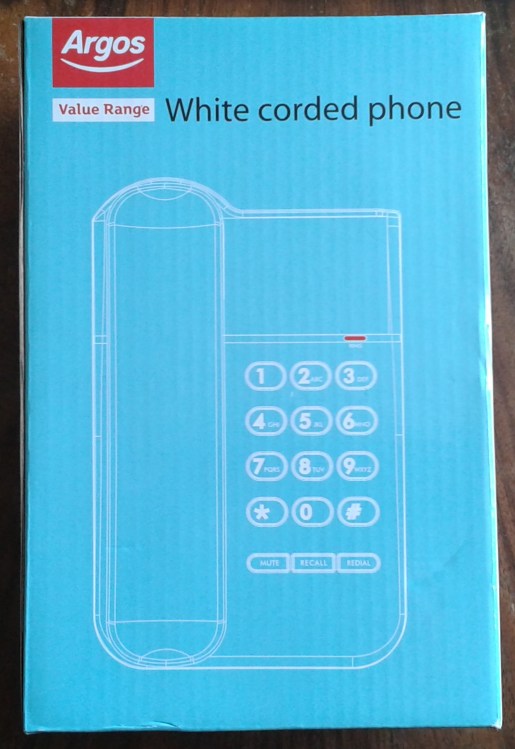


Background Information
To record both sides of a telephone conversation from a
traditional landline, you only need to record the
signal coming into the receiver, or earpiece. This is
because some level of your own voice is deliberately allowed to
leak electrically from the telephone's transmitter or microphone
into the receiver. The idea is that if you could only hear
the caller at the far end and the receiver is sealed against
your ear, it creates an odd effect because you can no longer
hear yourself speaking in that ear.
Any modern landline telephone should do, providing that there's
enough space inside for the transformer and somewhere to drill a
hole in the case and mount the socket. You might want to
buy an new, cheap phone to do this with. Line
specifications for telephone systems vary somewhat around the
world, but as we're only tapping into the receiver circuit, you
don't need to worry about this. It should work on any
telephone worldwide.
Adapting Your Telephone
Open up the Handset
Here I've unscrewed my telephone handset and looked
inside. There's only one reason for this, and that is to
identify the colour of the wires connected to the
receiver. In this case they are yellow and black.
While I was there, with the handset unplugged from the base, I
also measured the d.c. resistance of the receiver and this
measured 120.8 Ohms in this instance. By comparison, the
d.c. resistance of the transformer on the low impedance side is
about 0.3 Ohms. You'll
sometimes find that screws are hidden under stickers or
small caps like this one. Once the screw was removed
from the handset, there were also plastic clips at the top
and bottom which had to be eased apart quite
carefully to avoid breaking them. With the wire colours
noted, you can now put the handset back together.


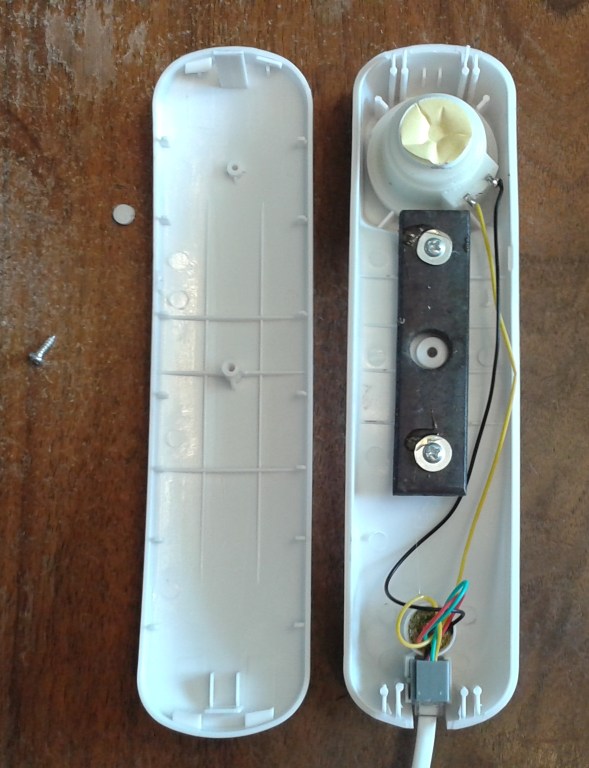
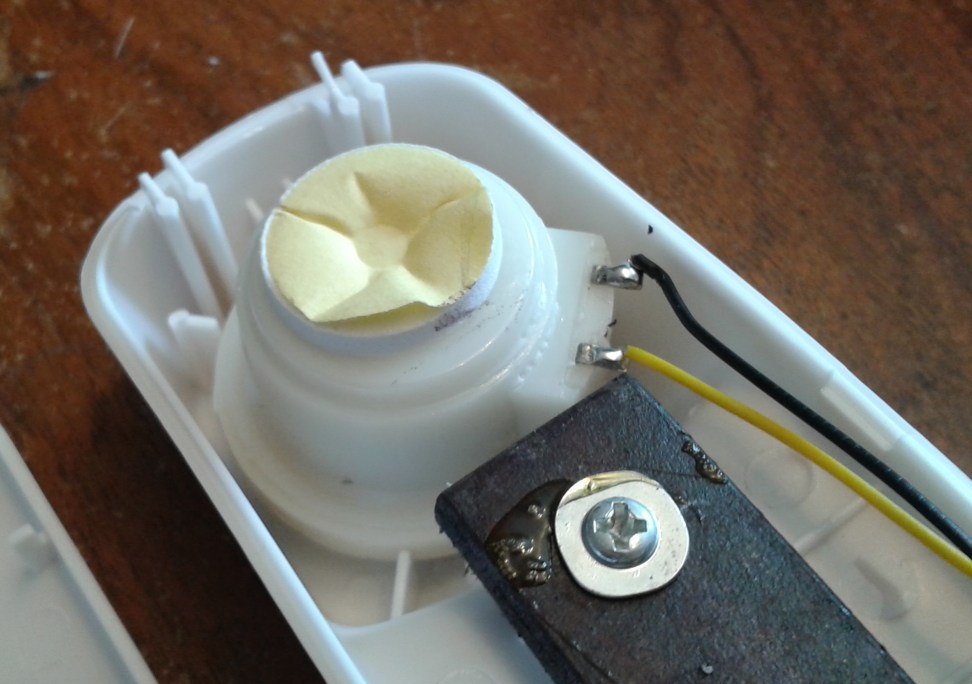

Open up the Base Unit And Fit the Socket
The base unit can be opened up in a similar way, and you might
need to temporarily unplug some wires, or in my case pull some
filter toroids away from their hot-glue mount points to gain
better access. You will need to find somewhere to fit the
parts, bearing in mind that it is best to have the transformer
right next to the socket to avoid having long wires on the
output side. In my case, there was no flat side wall on
which to mount the socket so I mounted it on the flat upper face
of the base unit. The hole required is xx mm diameter.

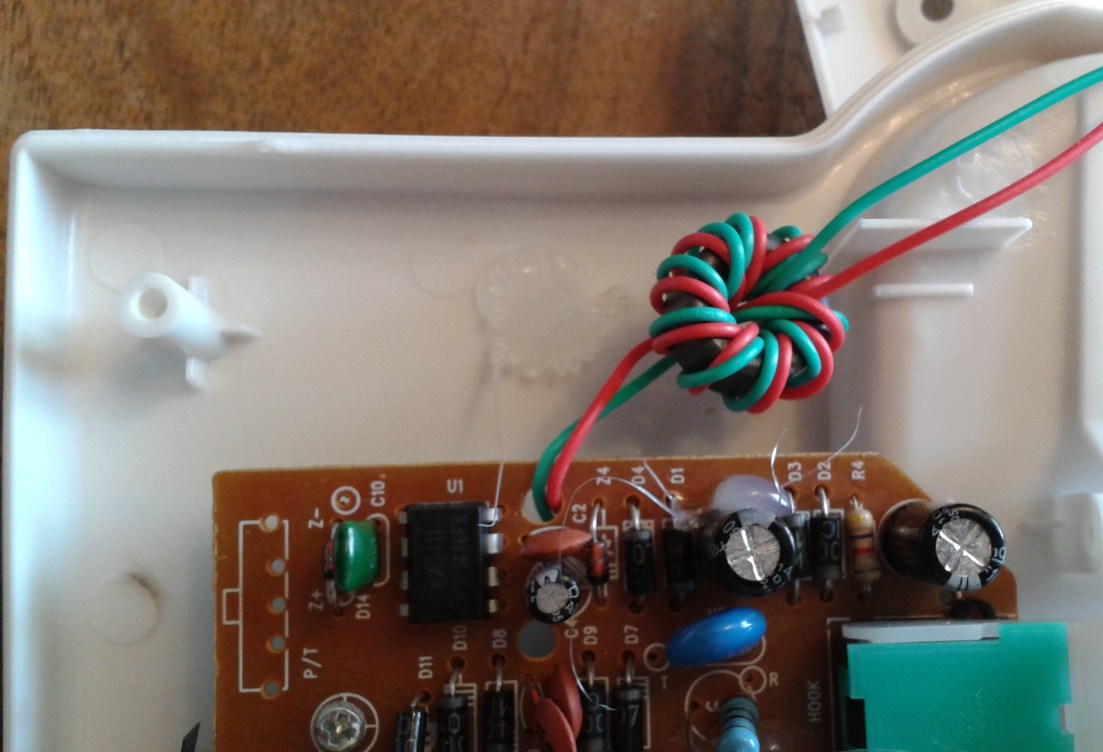



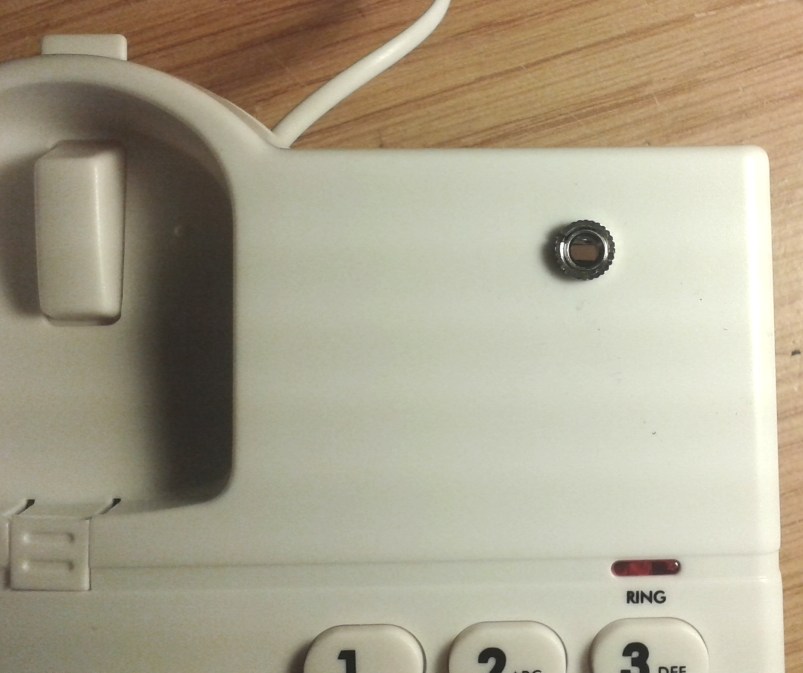
Connect the
Transformer to the Socket
I've put the transformer right next to the socket to avoid using
any screened cable. In this phone I've folded over the
transformer mounting tabs in order to make it fit, and later
glued it down with some hot glue. I've connected initially
just to the ground terminal on the side of the socket and the
stereo tip terminal, and then bridged across to the ring
connection in order to record the same signal on both
channels. The middle wire on the transformer winding is
unused and you can just cut it off. The
LT700 transformer has a high impedance side of about 1.2K
Ohms. This is pretty much ideal for connecting into
tape recorder microphone inputs and computer microphone line
inputs
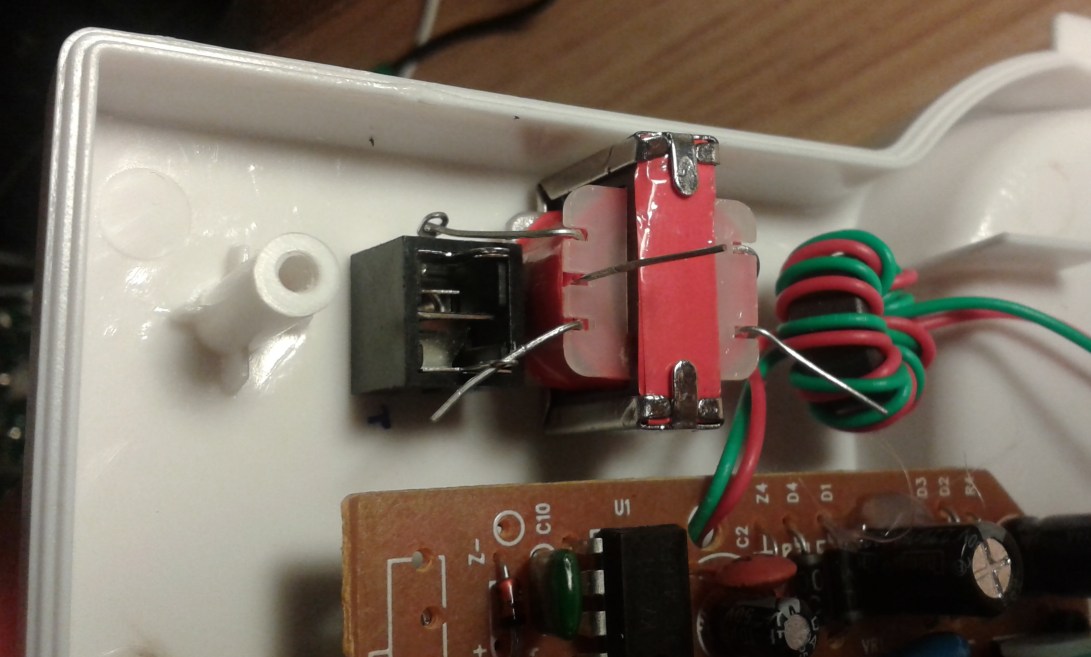
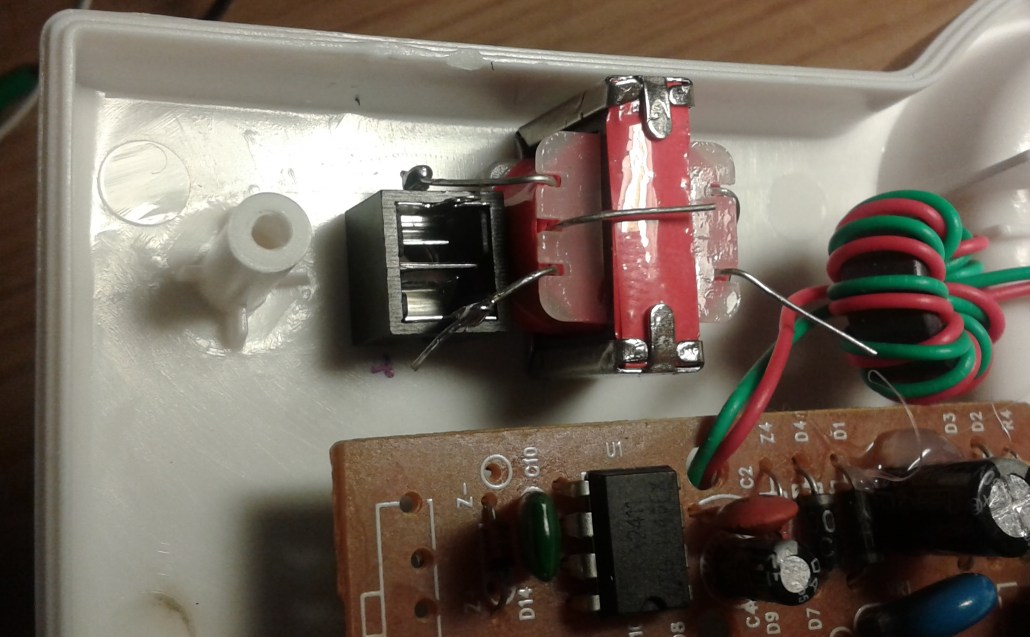
Connect the
Transformer into the Earpiece Circuit
Down in the base unit it should be possible to identify the same
two coloured receiver wires connecting into the circuit board by
some connector. You want to cut into one of them, as I
have done with the yellow wire and connect the two free ends to
the side of the transformer which only has two wires on
it. This is the low impedance side. Because it is
the low impedance side, it has very little effect on the signal
going to the receiver and to the rest of the telephone.
Electrically it is almost invisible, like connecting the two
ends of the cut receiver wire back together again. You
should twist the wires around each other to stop it forming a
large loop, then you can insulate both ends with tape and glue
down the transformer and in my case, re-glue the toroid filter
that I had to move.



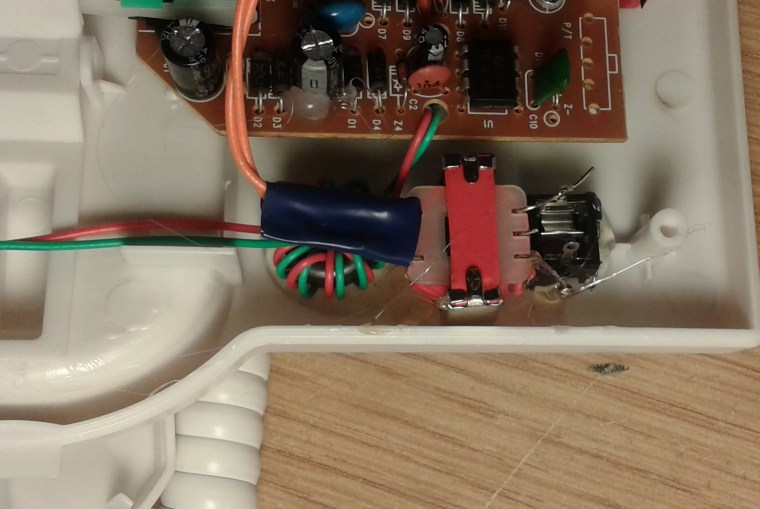
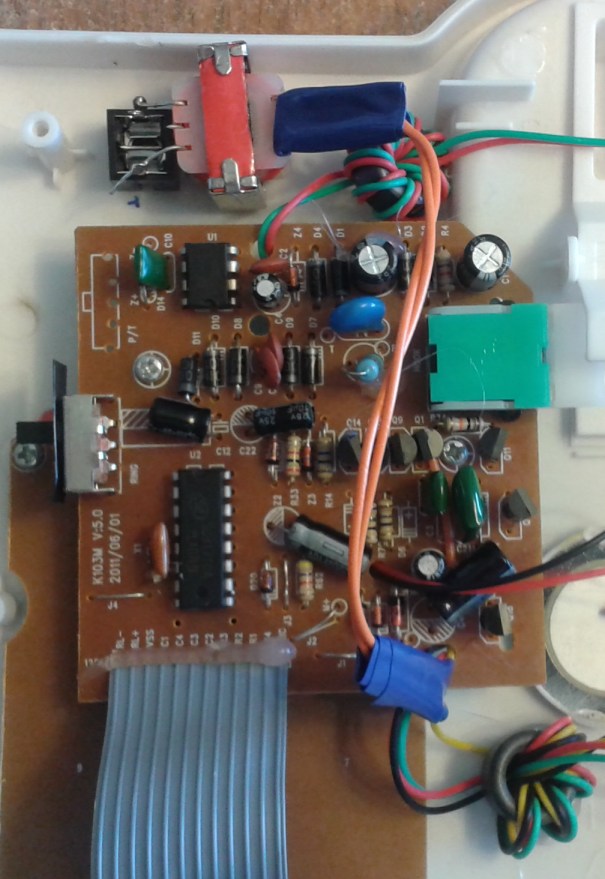
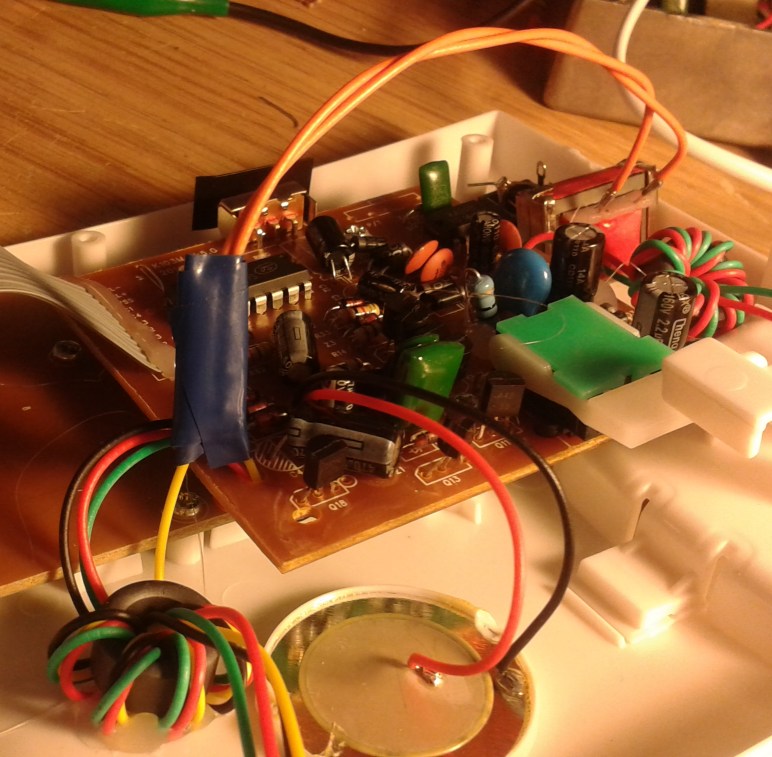

Testing
Put
the telephone case loosely back together and connect a standard
3.5mm jack plug stereo screened line into the socket on the
phone and most probably on the other end into a stereo
microphone socket on your tape recorder, mp3 recorder or
computer
microphone input socket. Press play and record
simultaneously (:) or start the system recording. Monitor on
headphones or PC speakers. Lift the telephone
receiver. You should hear the dial tone as usual in both the
standard telephone receiver and over your recording system.
Screw the telephone base unit back together, and you can
now dial out or receive calls as usual and record that fractious
conversation with your mum, bank, phone scammers, estate agent, or
Ebay customer support in ascending order of intransigence.
In the picture below I'm recording dialling tone, the recording
level control is at about 4 out of 10 and there's a full 0dB on
the recording level meter. Connecting a pair of powered PC
speakers or headphones into the headphone output allows you to
monitor the recording, or allows someone else to listen in.
You can do this via the computer also, if you can figure out the
signal routing.

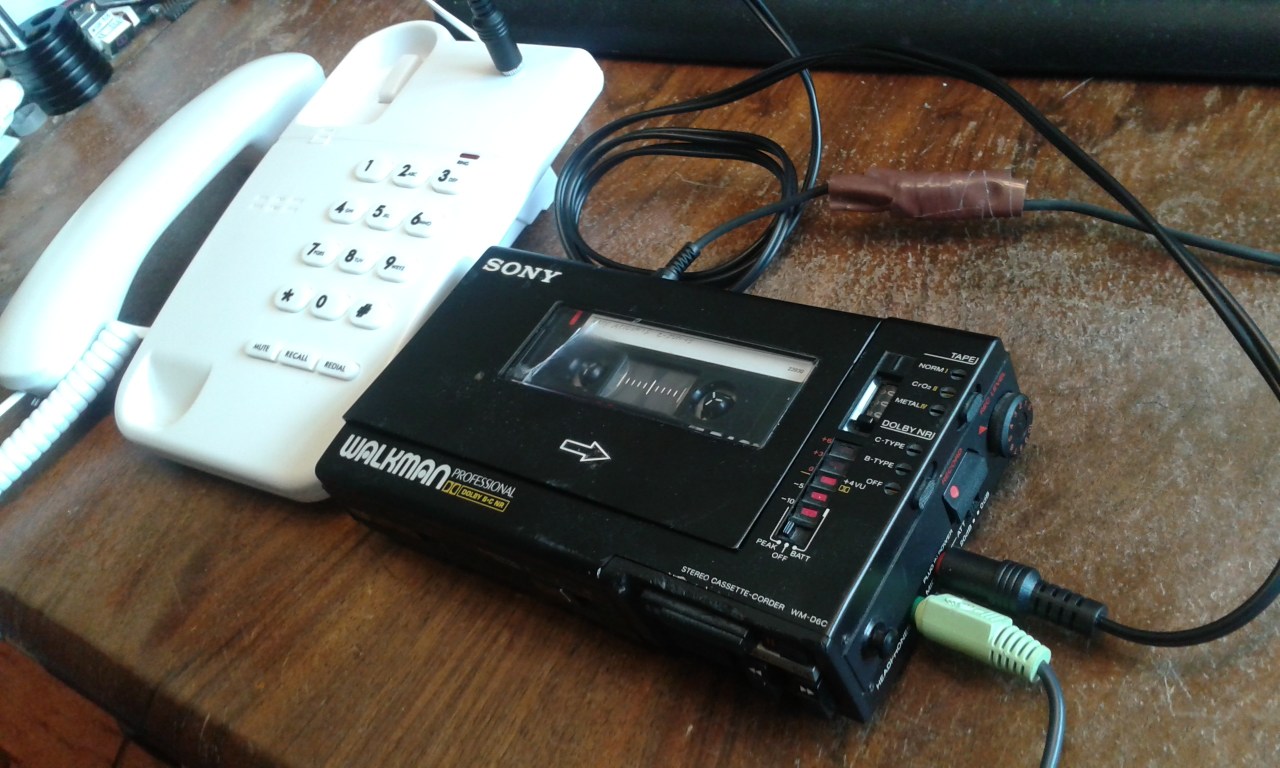
More Background
Information
I think that the quality available
is good, though the near-end voice is somewhat high-pass filtered
and this will depend mostly on the phone used. Because we've
used an isolating transformer there are no ground loops to cause
additional hum. I've found that it's best to earth the
recording device. I find I'm much more inclined to record
interesting conversations with irritating callers or institutions
if it is more convenient to do so, and it can be incredibly useful
to have a full record of such interchanges.
Audio
Samples
Here I am talking to myself on the telephone.
Tape Recorder Output
Socket Test 1
FAQs
Q: I want to record conversations on my mobile phone. How
can I do that?
A: As far as I know, /all/ old Nokia phones could do that
when we were still banging the rocks together and dinosaurs roamed
the earth back in 2002. I suggest reading the manual or
getting an old Nokia and swapping out the SIM for such
occasions. On Android you can now only record the
conversation on your side, which is hardly useful.
Q: I want to make a full Telebalance Unit, a TBU, to put
callers on air on my student radio station and talk back to the
caller from the studio microphone. Can I do something like
that in a similar way without spending a small fortune?
A: Yes. Yes you can, but I've not designed or
documented it using a standard telephone properly yet. I
made two variations back in the day, which you can see on the
Interesting Electronics site.
Q: Why do you need a transformer?
A: The earpiece lines are not electrically isolated from the
telephone line which will be at some different voltage compared to
your recording device. Attempting to connect directly to the
phone receiver is a very bad idea as there will be all sorts of
hum and worse, it can cause currents to flow from the phone line
into local mains earth. This will upset the balance and d.c.
state of the line, and is likely to annoy the 'phone company.
Q: Can I use another transformer in the telephone microphone
line to get a better recording of my outgoing voice, perhaps fed
into the other audio channel?
A: You can do this using a blue type LT44 transformer,
fitted the correct way round. The signal is at a lower level
so you have to compensate afterwards in your audio software, or
adjust the Left-Right recording gain. You can make the call
sound even better by being clever with your audio editing
software, but that's a project for another day.
Q: Do you supply these already made-up in the Argos
telephone?
A: Yes, but I like to try to scrape minimum wage for the
work, so they are not particularly cheap.
Should
you have any problems or
questions, my main email address
is shown below. This
address has been the same since
1997 and unless I'm on holiday
beyond mobile coverage, it is
checked daily including the spam
folder.
vila_nestor@hotmail.com
Navigate
Up
Edit History
24-JAN-2022: Added email address image and justifiably
insulted some children working on national radio, BBC Radio 4.
28-MAY-2022: Changed pictures around for Google mobile
usability problems, *Again*
26-AUG-2022:
Removed references to my ebay shop, having been "binned-off" from that
site for telling the truth about their business
practices to the UK vice-president
Murray Lambell.
05-OCT-2022: Google mobile
usability fail again. Text
to small to read?
























